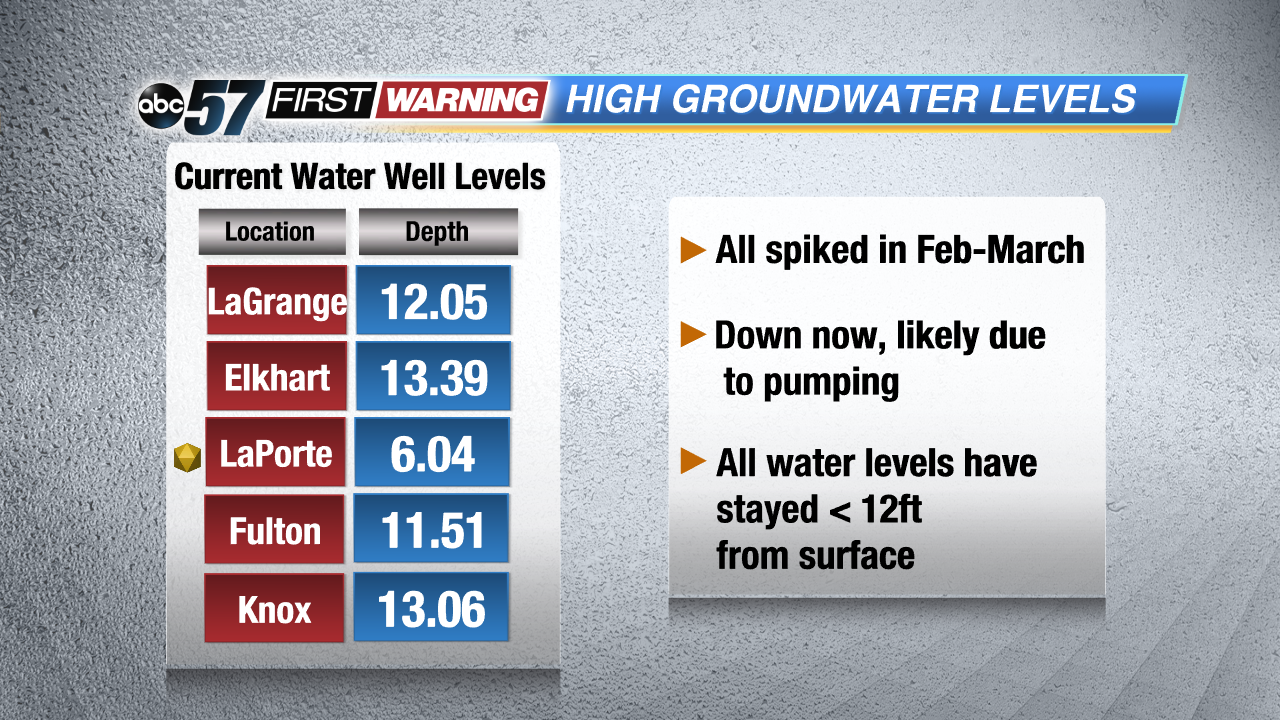High groundwater levels to blame for basement flooding
Right here on ABC57, we found that one local company is trying to help homeowners deal with wet basements, and they say in the past ten years they've never seen the problem so widespread.
The reason is because Michiana has received much more rainfall than normal since February, and because of this, the ground has stayed very saturated. We can measure how much water is in the soil by looking at how much water is filling up water wells across Michiana.
When there is a heavy rain event, the water seeps into the ground and fills up wells. The level of water in the well reflects how much water is in the surrounding ground. Therefore, if the water in the well rises so that it is only eight feet below the surface, then the ground surrounding the well is going to be saturated at around that same depth. If a basement is set eight feet below the ground, the water around those basement walls will cause pressure cracks and eventually seep into the basement, because it has nowhere else to go. That is the problem that many homeowners are having across Michiana.
As of Wednesday, water levels in most of the wells were between eleven and thirteen feet below the ground surface. All of the water levels are lower now than they were in February and March when the historic flooding happened. LaPorte's well water reached a near-record-high level at that time. The closer these numbers are to eight feet, the more likely basement flooding becomes, especially if your home is at the same elevation as the well.
This is likely the case for many Michiana residents. Click here to read the story about one company that is booked through November to combat the issue.
Check out whether wells have above, below or normal water levels in northeast St. Joseph CO, IN on this USGS page.
Monitor the status of the Pleasant Valley well in St. Joseph County on this USGS page.
Monitor other wells across northern Indiana on this USGS page.















